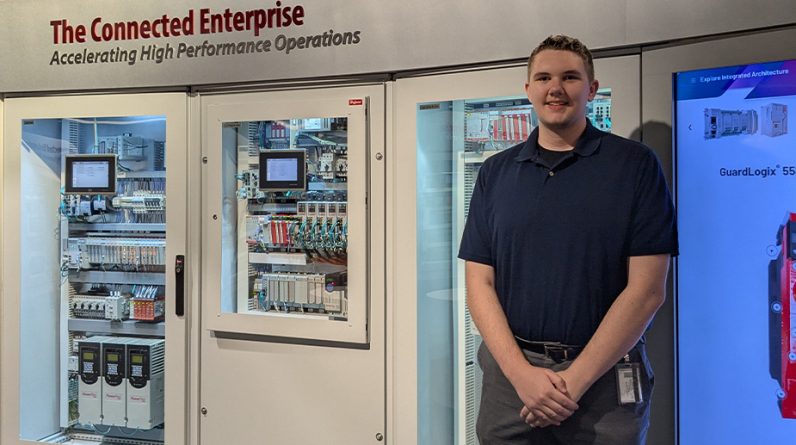
As we approach 2025, the landscape of business operations is rapidly evolving, driven by new artificial intelligence (AI) automation trends. These innovations are not just incremental improvements; they represent fundamental shifts in how organizations function, interact with customers, and manage their resources. Understanding and using these trends is crucial for businesses aiming to stay competitive and efficient in an increasingly digital world.
In this guide by Jono Catliff, explore seven pivotal AI automation trends that you simply can’t ignore as we approach 2025. So, if you’re ready to transform your business operations and embrace a future where efficiency meets innovation, read on to discover how these trends can be your secret weapon in the digital age to get a competitive edge.
TL;DR Key Takeaways :
- Life Cycle Automation streamlines client interactions by automating processes from inquiry to contract finalization, enhancing customer satisfaction and operational efficiency.
- AI in Automation is advancing with AI assistants handling tasks like email management, reducing human involvement in routine activities and refining business processes.
- AI-driven Document Processing automates data extraction and analysis, integrating seamlessly with systems to save time and reduce errors, making sure data accuracy.
- AI Chatbots are evolving to manage customer interactions and automate tasks like invoice dispatch, becoming central to customer service and operational efficiency.
- Robotic Process Automation (RPA) automates repetitive tasks, allowing human resources to focus on complex tasks, enhancing productivity and reducing errors.
1. Life Cycle Automation: Transforming Customer Relationships
Life cycle automation is redefining how businesses manage client interactions from initial contact to long-term engagement. This comprehensive approach encompasses:
- Automated lead generation and qualification
- Personalized onboarding processes
- Intelligent contract management systems
- Proactive customer retention strategies
By implementing life cycle automation, you can dramatically reduce manual tasks and focus on strategic initiatives. This shift not only enhances operational efficiency but also ensures a consistent, high-quality customer experience throughout the entire relationship. The result is improved customer satisfaction, increased loyalty, and more predictable revenue streams.
2. AI-Driven Automation: The New Frontier of Efficiency
Artificial Intelligence (AI) is at the forefront of automation, transforming routine tasks into intelligent, adaptive processes. AI assistants are now capable of:
- Managing complex email communications
- Coordinating intricate workflows across departments
- Providing data-driven insights for decision-making
- Predicting and preventing operational bottlenecks
As AI technology continues to advance, expect to see even more sophisticated applications that can learn from past interactions and optimize processes in real-time. This evolution will enable businesses to achieve unprecedented levels of efficiency and responsiveness.
2025 Automation Trends
Below are more guides on automation from our extensive range of articles.
3. AI-Powered Document Processing: Transforming Data Management
The integration of AI in document processing is transforming how businesses handle information. This technology enables:
- Automated extraction of key data from various document types
- Intelligent categorization and filing of information
- Seamless integration with existing accounting and ERP systems
- Real-time data analysis and reporting
By using AI-powered document processing, you can significantly reduce manual data entry, minimize errors, and gain faster access to critical business information. This trend not only saves time but also enhances decision-making capabilities by providing accurate, up-to-date data at your fingertips.
4. Advanced AI Chatbots: The New Face of Customer Interaction
AI chatbots are evolving from simple query responders to sophisticated interfaces capable of managing complex customer interactions. These advanced chatbots can:
- Handle multi-step processes like invoice generation and dispatch
- Provide personalized product recommendations
- Offer real-time support across multiple channels
- Learn and adapt to customer preferences over time
As AI technology progresses, chatbots will become increasingly indistinguishable from human agents, offering seamless, 24/7 customer service while significantly reducing operational costs.
5. Robotic Process Automation (RPA): Enhancing Human Potential
RPA is transforming how businesses handle repetitive tasks by deploying software robots to mimic human actions in digital environments. Key applications include:
- Automated data entry and validation
- Streamlined file management and organization
- Efficient processing of financial transactions
- Automated report generation and distribution
By implementing RPA, you can free up human resources for more complex, value-added tasks. This not only boosts productivity but also reduces errors and improves employee satisfaction by eliminating monotonous work.
6. Humanizing Automation: Balancing Efficiency with Personal Touch
While automation drives efficiency, maintaining a human element remains crucial for brand identity and customer trust. Humanizing automation involves:
- Integrating human oversight in automated processes
- Making sure brand consistency in automated communications
- Providing options for human interaction when needed
- Using automation to enhance, not replace, human creativity
By striking the right balance, you can use automation’s benefits while preserving the personal touch that builds lasting customer relationships.
7. Hyper Automation: The Convergence of Multiple Technologies
Hyper automation represents the pinnacle of automated business processes, combining various technologies into a cohesive, self-improving system. This trend encompasses:
- Integration of AI, machine learning, and RPA
- Continuous process optimization through data analysis
- Automated decision-making based on real-time insights
- Scalable automation across entire organizations
By embracing hyper automation, businesses can achieve unprecedented levels of operational efficiency and adaptability, positioning themselves to thrive in rapidly changing market conditions.
As we move towards 2025, these seven automation trends will continue to reshape the business landscape. By understanding and strategically implementing these innovations, you can position your organization at the forefront of efficiency, customer satisfaction, and competitive advantage. The key lies in not just adopting these technologies, but in integrating them thoughtfully into your business strategy to create a more agile, responsive, and successful enterprise.
Media Credit: Jono Catliff
Filed Under: AI, Top News
Latest Geeky Gadgets Deals
If you buy something through one of these links, Geeky Gadgets may earn an affiliate commission. Learn about our Disclosure Policy.
Originally Appeared Here






